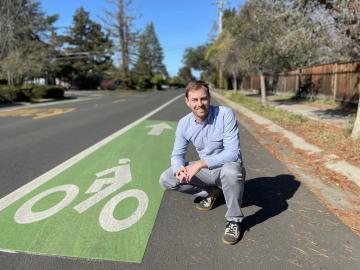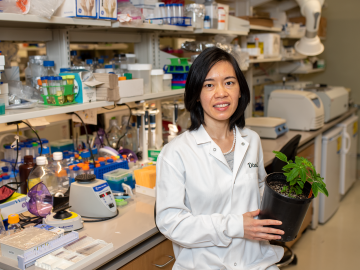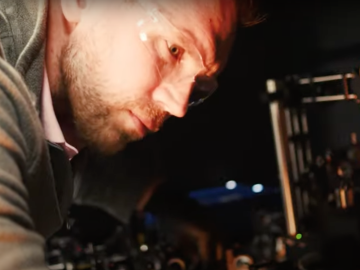
Filter News
Area of Research
- Biology and Environment (32)
- Computational Biology (1)
- Computer Science (2)
- Energy Science (27)
- Fusion and Fission (15)
- Fusion Energy (5)
- Materials (19)
- Materials for Computing (5)
- National Security (18)
- Neutron Science (10)
- Nuclear Science and Technology (7)
- Quantum information Science (2)
- Supercomputing (71)
News Type
News Topics
- (-) Artificial Intelligence (79)
- (-) Computer Science (117)
- (-) Cybersecurity (14)
- (-) Exascale Computing (51)
- (-) Frontier (45)
- (-) Fusion (40)
- (-) Polymers (12)
- (-) Security (18)
- 3-D Printing/Advanced Manufacturing (60)
- Advanced Reactors (13)
- Big Data (50)
- Bioenergy (70)
- Biology (82)
- Biomedical (44)
- Biotechnology (26)
- Buildings (35)
- Chemical Sciences (37)
- Clean Water (17)
- Composites (12)
- Coronavirus (20)
- Critical Materials (6)
- Education (2)
- Emergency (3)
- Energy Storage (37)
- Environment (124)
- Fossil Energy (6)
- Grid (34)
- High-Performance Computing (82)
- Hydropower (6)
- Isotopes (35)
- ITER (4)
- Machine Learning (40)
- Materials (53)
- Materials Science (64)
- Mathematics (9)
- Mercury (7)
- Microelectronics (3)
- Microscopy (27)
- Molten Salt (2)
- Nanotechnology (21)
- National Security (63)
- Neutron Science (85)
- Nuclear Energy (71)
- Partnerships (36)
- Physics (39)
- Quantum Computing (35)
- Quantum Science (49)
- Simulation (44)
- Software (1)
- Space Exploration (13)
- Statistics (2)
- Summit (40)
- Transportation (35)
Media Contacts

David McCollum is using his interdisciplinary expertise, international networks and boundless enthusiasm to lead Oak Ridge National Laboratory’s contributions to the Net Zero World initiative.

The rapid pace of global climate change has added urgency to developing technologies that reduce the carbon footprint of transportation technologies, especially in sectors that are difficult to electrify.

A study by researchers at the ORNL takes a fresh look at what could become the first step toward a new generation of solar batteries.

A team of researchers working within the Center for Bioenergy Innovation at ORNL has discovered a pathway to encourage a type of lignin formation in plants that could make the processing of crops grown for products such as sustainable jet fuels easier and less costly.

Surrounded by the mountains of landlocked Tennessee, Oak Ridge National Laboratory’s Teri O’Meara is focused on understanding the future of the vitally important ecosystems lining the nation’s coasts.

ORNL manages the Innovation Network for Fusion Energy Program, or INFUSE, with Princeton Plasma Physics Laboratory, to help the private sector find solutions to technical challenges that need to be resolved to make practical fusion energy a reality.

A rapidly emerging consensus in the scientific community predicts the future will be defined by humanity’s ability to exploit the laws of quantum mechanics.

A new version of the Energy Exascale Earth System Model, or E3SM, is two times faster than an earlier version released in 2018.

A team of scientists led by the Department of Energy’s Oak Ridge National Laboratory and the Georgia Institute of Technology is using supercomputing and revolutionary deep learning tools to predict the structures and roles of thousands of proteins with unknown functions.

The world is full of “huge, gnarly problems,” as ORNL research scientist and musician Melissa Allen-Dumas puts it — no matter what line of work you’re in. That was certainly the case when she would wrestle with a tough piece of music.


